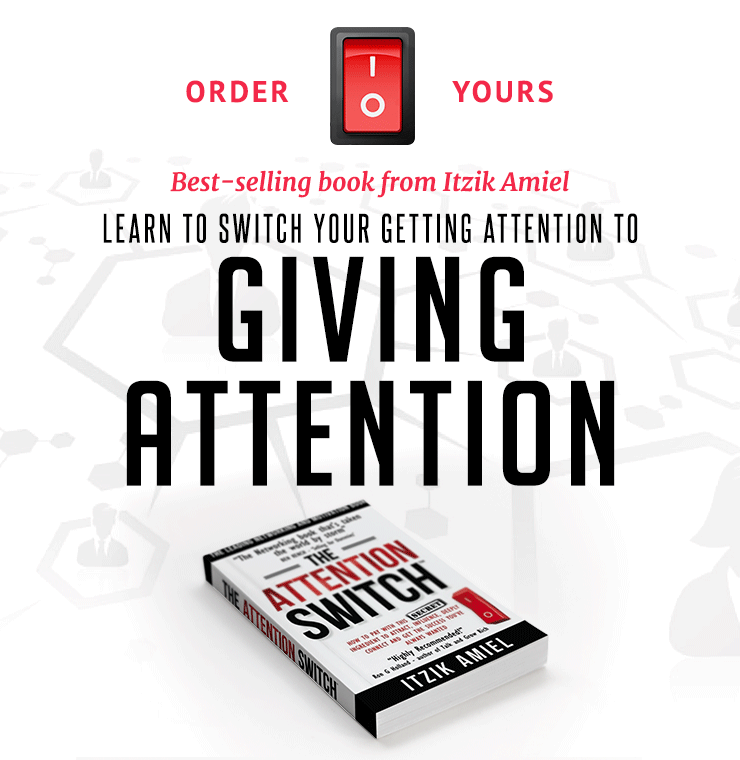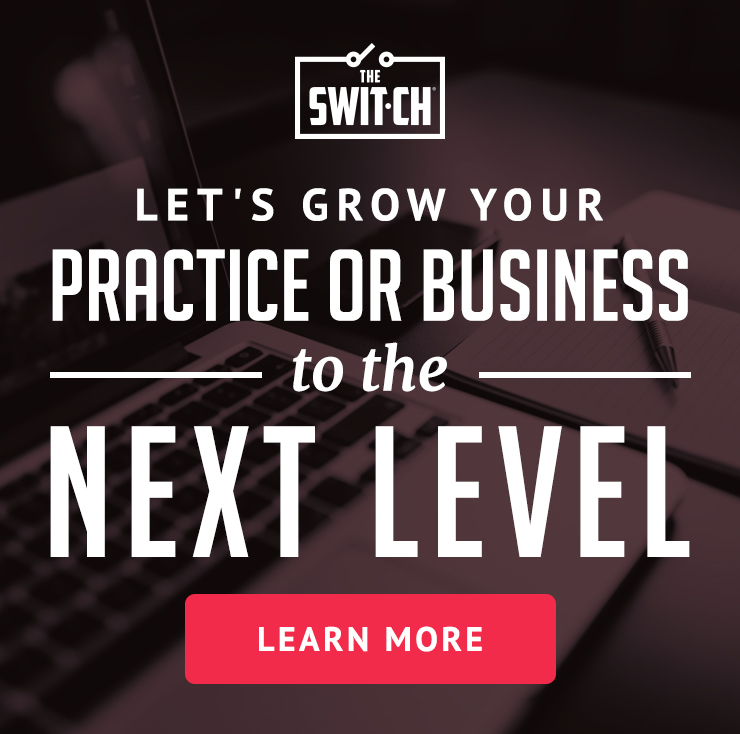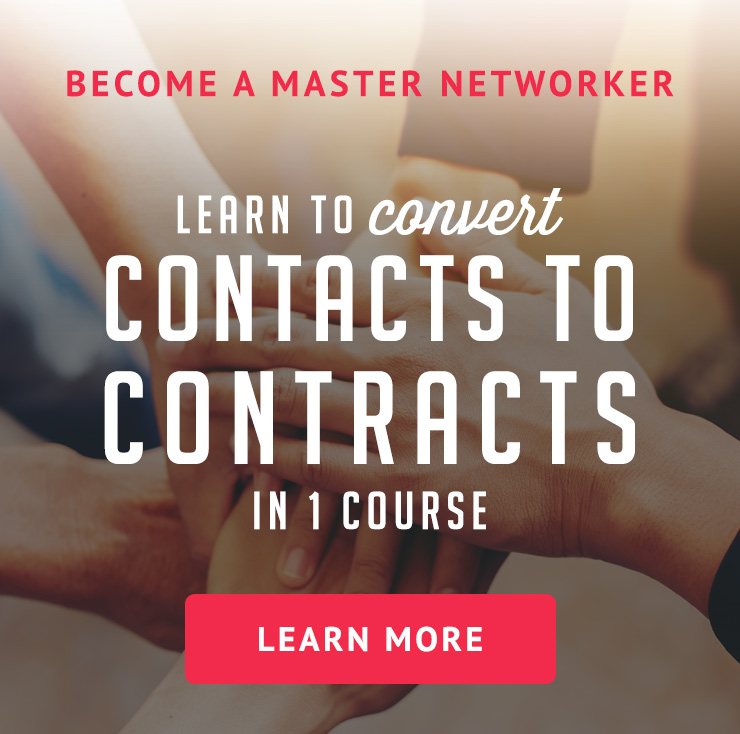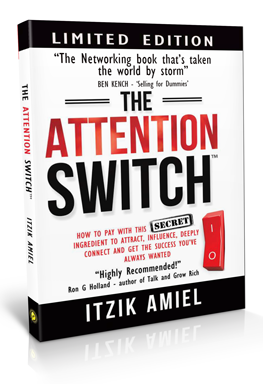“I’m an introvert. What do you suggest I should do?”
Recently I gave an internal training for an international law firm’s employees.
In one of the breaks, one of the partners approached me.
“Your ideas about business development and building a personal brand are great and practical, and I can see how they’d work,” he told me.
“But I do not see them work for me — I’m an introvert. What do you suggest I should do?”
What he didn’t realize is that he is probably an ambivert, I’m one, too.
In a Wall Street Journal interview, psychologist Adam Grant estimated that ambiverts make up between half and two-thirds of the population.
This is good news because ambiverts win at life and business.
Ambivert individuals combine the best of both sides.
In one of several such studies, ambiverts achieved higher business development productivity than introverts or extraverts — in some cases, twice as much.
Because ambiverts can listen as well as assert themselves, they’re ideal partners, co-workers, business owners, and leaders.
To be sure, “pure” introverts and extraverts do exist, but they’re exceptions.
As also concluded by Carl Jung, who advised the terms introvert and extrovert in the 1920s:
“There is, finally, a third group, and here it is hard to say whether the motivation comes chiefly from within or without…this third group is the most numerous and includes the less differentiated normal man.”
Why You Need to Know Yourself
All of these will fall on the most significant question: why is it important?
A few experts on this subject implied that knowing yourself, if you’re an introvert, an extrovert or an ambivert, will help you maximize your capabilities, strength, power.
One significance of knowing this different attributes is its effect on the business development of your practice.
Getting to know yourself, will help you direct your abilities in the most appropriate way possible.
The fact is while not many professionals are comfortable with the idea of business development, the majority have realized it’s a necessary evil, especially nowadays.
It’s true that many of the best ways for business development and to establish your authority in the professional world are still weighted toward extroverts.
Amongst others, taking leadership positions in professional associations, speaking at events or conferences, attending networking events etc.
It’s one of the biggest challenges introverts (or I better say – non-extraverts) in the professionals’ world or business say they face: the business development/sales process.
So if you belong to this group – of non-extraverts – how do you manage business development activity effectively?
Suggestion #1: It’s a Simple SWITCH
Many professionals, especially the introverts amongst us, think, mistakingly that business development equal sales.
But as a professional, you did not study to be a sale person.
You do not want to be considered as a “sleazy” sale person.
That’s not your style, right?
You are a trusted advisor!
The truth is, you wish you could just have somebody else do the selling for you, so you can focus on delivering your expertise to your clients.
Right?
And that’s where the opportunity for business development for introverts and ambiverts.
It’s a simple SWITCH:
think of business development as an opportunity to build relationships, to help, not to sale.
When you do that, you can more easily implement strategies that play to your introvert preferences.
Preferences like listening, forming lasting connections, going deep rather than broad, and hyper-focusing your energy where there is the potential for the highest return.
For me, business development or business building is relationship building.
And I am convinced that you need to adopt the same mindset.
This will help you switch your mind from trying to “close the sale” to becoming a valuable source of service and advice for your clients and connections.
You should aim that majority of your business development activities will be about making meaningful connections with qualified prospects and existing (and even lost) clients.
Suggestion #2: Create the right fit
As a professional, make sure that your business development approach, as well as the types of business development activities you do, will be the right ones for you…
…or to the specific individuals involved.
Firms and businesses need to create the right fit between the business development activity and the person who is responsible for it.
Never use “one size fits all” strategy when it comes to the business development of your professional practice.
I trust you agree with me.
In my experience, if a professional is given responsibility for a business development activity that he or she isn’t comfortable with, the activity will be poorly completed or simply ignored.
This will definitely affect the practice’s business development.
Different styles, different personalities, different business development activities – done by the right fitted professionals within the practice, will attract different kinds of clients.
But more importantly — certainly MORE clients.
And by the way – this is a simple process, not a scientific process.
I help a lot of professional firms achieve it, based on a strategy I explain in my bestselling book “The Attention Switch”.
By spending time with each member of your team individually, talking to them, asking very specific questions in the right order (!)…
…you can get the relevant information that will help you create the right fit for professionals in your firm and the right business development activity.
Suggestion #3: Learn to respect your natural tendencies
One partner at a large accounting firm once asked me how she could be truly authentic in her dealings with others, given how uncomfortable she was when it came to business development activities;
She worried she’d have to put on a smiley, outgoing façade.
Yet I’m convinced it’s possible to be real about the business development for your professional practice or business, while still respecting our natural tendencies.
Here are some clear steps for you to take in building your business development for your practice while taking advantages of your natural tendencies.
[This is just a brief introduction to a special training I give to professional firms and my online offering – get in touch if you want to learn more details about the below process].
Each step represents another level of deeper investment in developing your relationships with the potential clients:
STEP#1: PREPARE
You need to start the process of know-like-trust with your prospects clients.
You can do it by offering values on a constant and consistent basis.
For example, by sharing articles (your own articles/blog or of other people), audios (like podcasts) etc.
In general, this is just to create and build your reputation as an expert in your field.
No need for interaction with the prospects at this stage.
They need to know about you and your expertise, That’s all.
STEP #2: POSITION
The intention at this stage to know more about your prospective client.
The information you share in this stage requires more direct communication and connection with the prospects.
They may share with you their details, connected with you via social media, share your content with their network of connections etc.
The content you deliver in this stage (e.g. newsletters, speaking, etc.) is one-to-many.
The information you share with your prospects in this stage can be used in one of two ways:
1) You give sufficient information that can be implemented by the prospects themselves.
or 2) You give the prospect enough information that they are inspired, curious, and see you as a trusted advisor.
They should also become aware of the benefits of working personally with you as an expert professional.
Notice: you did not have to say or sell anything.
Only by sharing this relevant information, you create the need of the client to work with you.
They convince themselves!
STEP #3: PERSONAL
At this step, you want the interaction and content switch from one-to-many to one-to-one.
It should become more personal and more focused on building a long-lasting relationship with this specific client.
Of course, also your services in this step become more custom services/products to this specific client needs.
STEP #4: PERMISSION
In this step, we want to assume that the client already got to know-like and trust you!
The client is convinced that you and your practice or business are the right fit for her needs long-term.
This client is turning to become your practice ambassador and a true source of more referrals to your practice.
[If you want to learn more about how to turn your clients to become your ambassadors, feel free to download for free my e-book: “The Only 8P Tactics You Need To Master”]
These clients deserve your best services and products and they are willing to commit to your practice.
You need to continually nurture the relationships as undivided part of your business development activities.
One that focuses on building trust and connection.
Suggestion #4: New business development channels
Nowadays, there are several business development channels that ambivert and definitely introvert should consider and may actually have an advantage (over an extrovert).
First, social media. Or more specifically a blog.
With a blog — one of the best ways to develop and to demonstrate your trusted advisor position — you can share your thoughts, in your own tempo and develop real conversations with others.
Indeed, while extroverts professionals building their business development at networking events and conferences, you can build your business development activities on the strength of your ideas.
Next new business development channel for you could be becoming a connector one person at a time.
A client of mine used to work at one of the largest accounting firm globally. He considers himself as an introvert.
Here the advice I gave him. To commit and every 2 weeks to ask another colleague from another department of the firm to lunch.
He started by inviting colleagues from the same office he met initially at internal company meeting but later started connecting with other colleagues from other offices.
Within a few months, he had begun to build a robust internal network inside his professional firm. [By now we also have a special system that automated this process].
In other words, you can make yourself professionally indispensable, even if you are an introvert if you develop connections that enable you to be at your best.
NB> I do consider internal networking as part of the business development activity within a professional firm (especially the large ones!). But this is a subject of a different post 🙂
LEVERAGE YOUR PERSONALITY.
The key to success in business development as an introvert is to leverage your personality to achieve your goals.
In the popular imagination, business development is often equated with high-energy, sales, pitching, hand-shaking showmanship.
But, specifically for non-extraverts, there are other, sometimes better, ways you can develop our business development activities within your professional practice.
Play to your strengths, make the effort and embrace the fact that not only are you an introvert, but you are a damn good business developer- Even if your methods are less than traditional.
Taking the time to reflect and be thoughtful about how you’d like to develop your business development activities, and your trusted advisor position is important.
Only then living that out through your sharing in the right environments is a powerful way to ensure your practice business development.
Do you consider yourself as Extravert, Introvert or Ambivert? Please share and why?

“Itzik is an International Speaker, Bestselling Author, Business Mentor & Attorney-at-law. The Global Leading Authority on Business Development, Business Networking, Referrals & Relationship Capital & Founder of THE SWITCH® and THE SWITCH HUB®”





